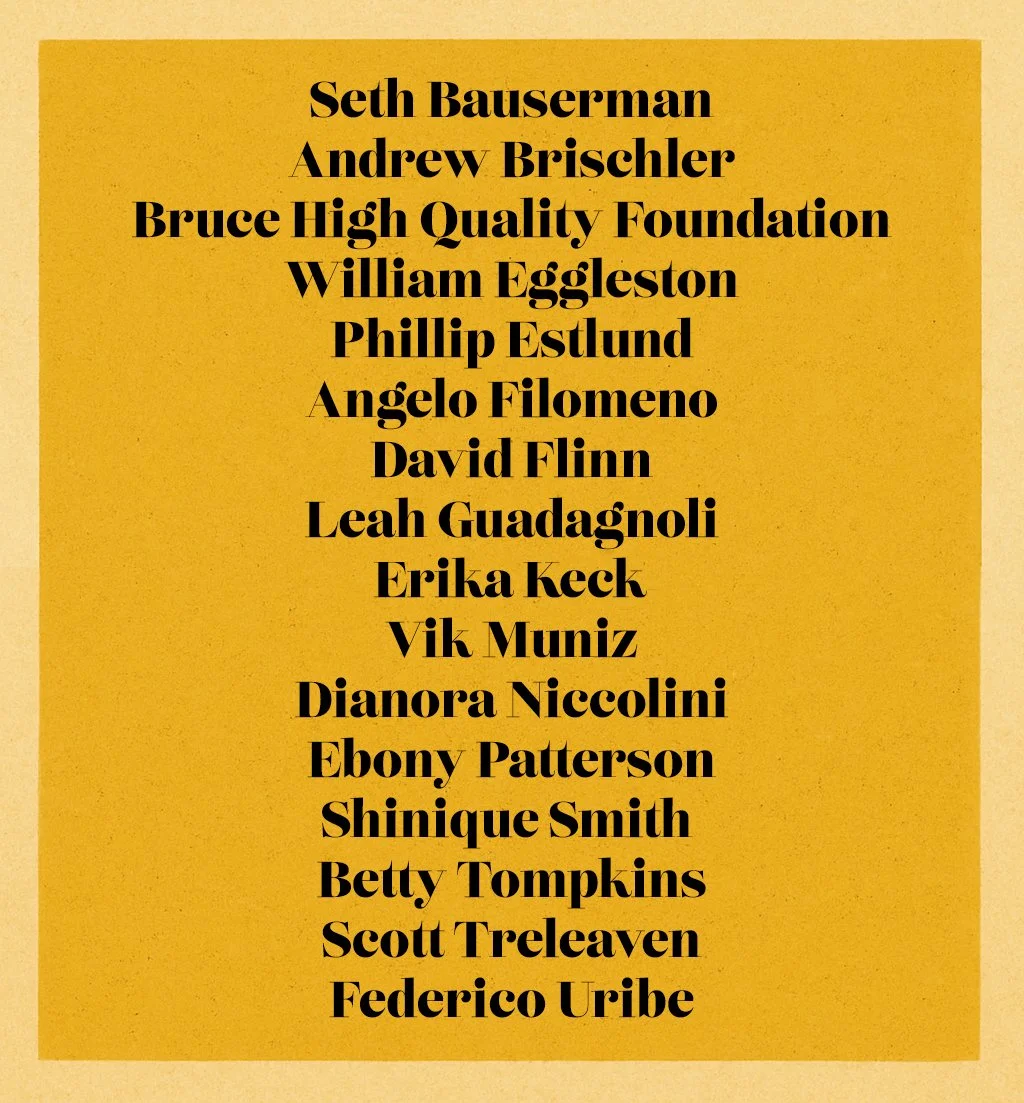Pushing up Daisies
June 25th - September 2nd
Pushing Up Daisies takes its name from a colloquial euphemism for death, an “eternal sleep” where death makes way for new life. Thought to have originated among British soldiers in World War I, the phrase highlights the paradoxical: life emerging from decay, remembrance rooted in the mundane. This exhibition uses that tension as a point of departure, tracing the cyclical nature of deterioration and renewal and how the discarded or overlooked, whether object, image, or body, convey influential afterlives.
Among the artists featured is the elusive and insurgent collective The Bruce High Quality Foundation, formed as an anonymous, collaborative response to the commercialization and institutionalization of contemporary art. Rooted in satire and social critique, the group constructs poetic gestures from everyday detritus. The use of a smoked cigarette in an empty beer can, with a subversive smiley face and adhered cigarette to its mouth on the exterior, is as much an anti-monument as it is a meditation on consumption, absence, and ritual. The object references the forgettable, an otherwise discarded vessel, referencing a quiet postscript of a life or moment no longer present.
William Eggleston similarly honors the overlooked. Within his oeuvre are images of trash, interiors, parking lots, and tangled cords that elevate the mundane to the realm of the sublime. Eggleston’s lens democratizes beauty, refusing hierarchy, he treats garbage with the same reverence as a landscape or portrait. In the context of this exhibition, Eggleston’s work becomes a visual archive of impermanence, documenting the quiet poetry embedded in the everyday.
Ebony G. Patterson’s ...when they grow up... series stands in stark, sorrowful contrast. Lavish and densely layered, her large-scale tapestries and photo-based works memorialize the lives of Black youth lost to systemic violence. Patterson cloaks her subjects in flora, glitter, and abundant patterns, creating surfaces that demand closer inspection. Her work interrogates how we process death and visibility, especially when it intersects with race, beauty, and social erasure.
Vik Muniz’s Electric Chair, from his Pictures of Glitter series, brings these themes into sharp conceptual focus. Muniz reinterprets the iconic image of the execution device depicting the machinery of state violence and the material culture of disposal. His recreation of the iconic Warhol work confronts viewers with the tension, forcing a reckoning with how history is designed by what we throw away.
Together, these works do not simply mourn what no longer exists. They reflect on what remains and the power of those remnants to tell new stories. Pushing Up Daisies asks us to look closer at the ruins: what is left behind, what we choose to see, and what insists on being remembered.


